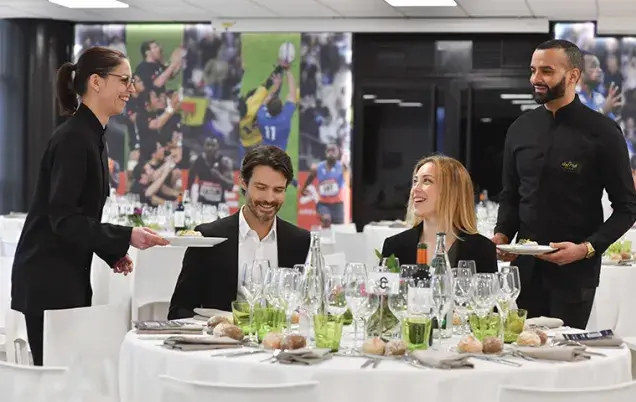
How can you conduct a public relations activity in compliance with the Sapin II law?
Since the publication of the Sapin II law and the recommendations of the French Anti-Corruption Agency (AFA), is it still possible to organise public relations activities? The AFA's answer is explicit: "public relations activities are ordinary acts of business life". But it also comes with recommendations!
Inviting your professional contacts to participate in an event under special conditions is therefore possible, but this practice does not exclude the risk of corruption if it is not supervised and organised.
To guide you, Stade de France has published a practical guide, based on the recommendations of the AFA, which is intended to help companies that organise public relations activities to comply with the obligations of the SAPIN II law. This article summarises its main concepts.
The framework of the Sapin II law
Since 2017, the Sapin II law has made recommendations for assessing corruption risks. For fear of legal proceedings or criminal sanctions and not always knowing their rights and obligations, some companies have simply stopped their gifts and invitations policy.
The AFA subsequently clarified its recommendations on gifts and entertainment in a specific guide for companies. It confirms that these practices are common in business life and are not sanctionable as such.
But the AFA also explains the importance of risk mapping based on three dimensions: the purpose of the invitation, its frequency and its value.
A clear public relations strategy
Stade de France specifies in the white paper on the Sapin II law that a "public relations strategy is a set of actions that aim to change a targeted audience’s perceived image of a company, a brand or a product".
For a successful public relations activity, Stade de France recommends that you:
1/ define the objectives and targets of your public relations programme
2/ determine the internal and external players in the programme
3/ identify the means to be used to ensure the success of the programme
4/ establish performance indicators
5/ set up monitoring of the achievement of the objectives and the guests.
Following these five tips also helps control the risk of corruption. The AFA explains that one of the best ways to comply with the Sapin II law is to implement a clear and transparent public relations strategy. Making the invitation part of a formal and organised hospitality programme, objectifies the reasons why the invitation is being offered and accepted, thereby removing any doubts about an attempt at corruption.
Practical tools to remove doubts about attempted corruption
Stade de France, as an expert in public relations programmes for more than 20 years, has published a guide to assist companies in implementing their activities. By respecting these best practices, it will be easy for you to remove any suspicion regarding your invitations, which will be part of a defined and transparent corporate strategy.
Here are the best practices:
1/ Keep a guest register
Each customer record provides a history of the relationship and therefore controls the frequency of invitations. It specifies the context and the objective of the invitation to define its purpose. This record also lets you evaluate the return on investment according to the customer's turnover and the value of the invitation offered.
2/ Establish objectives and key indicators
To succeed in your hospitality programme, it is recommended that you define key indicators such as participation and satisfaction rates and set clear objectives. It can be difficult to quantify the return on investment (ROI) of an event, but it is entirely possible to measure the ROO: return on objectives.
If your objective is to increase customer value, for example, this objective can be measured in different ways: +10 points of brand awareness, 50% of customers visited within 2 months, or 5 additional appointments per salesperson within 3 months.
By focusing on results, the public relations activity is all the more objective and transparent.
These practical tools make it possible to justify the purpose, frequency and value of invitations, which are three key elements defined by the AFA to control the risk of corruption.
Companies that have taken care to fully transparently develop a structured public relations policy that meets specific objectives and is monitored over time, are examples to follow. By strategically inviting its business contacts, the company clearly shows its intention, moderates the frequency of its invitations and respects the meaning of the measure, in order to preserve its ROI/ROO. Thanks to this approach, it removes any doubt about its intention and therefore about a potential corruption attempt.
To find out more about this subject, we invite you to download the white paper "How to conduct a public relations activity in compliance with the Sapin II law" which specifies all the best practices to follow in order to organise public relations activities in compliance with the legal framework in force.








